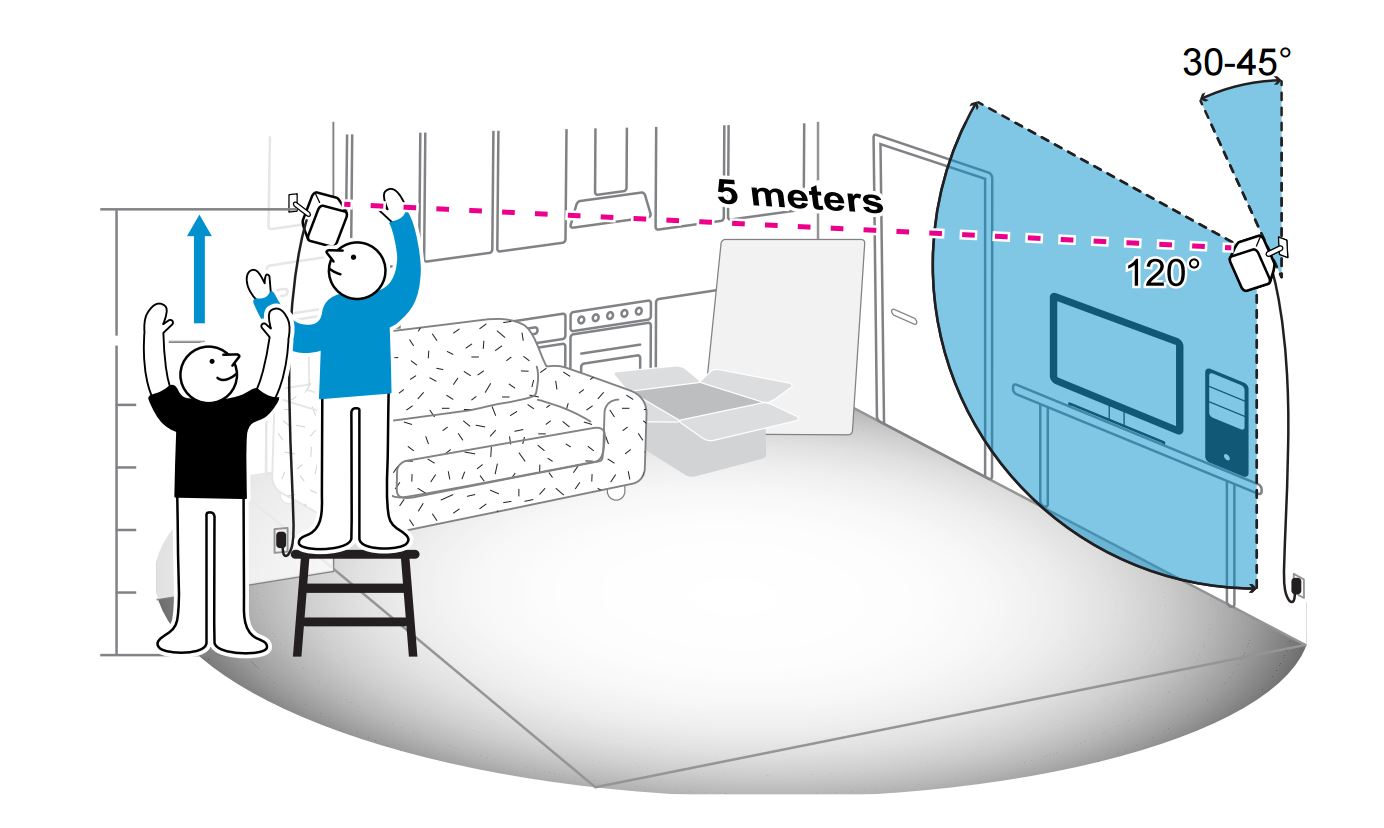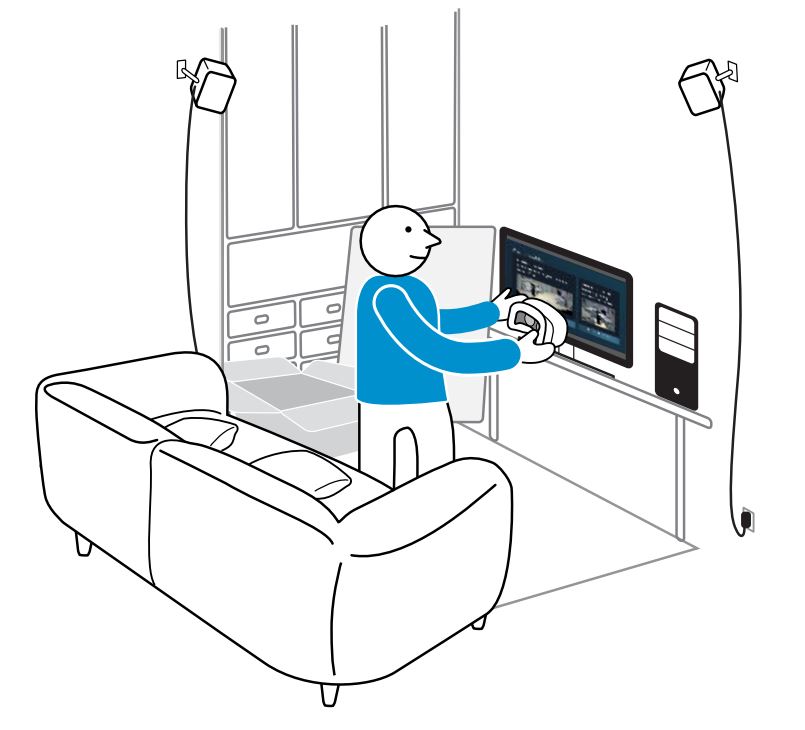You’re going to need a large area to enjoy the full capabilities of the HTC Vive virtual reality headset. VR watchers have always known this. But now, they’re finally getting the specifics.
HTC has uploaded the user guide for its Vive PRE development kit, which is the latest version of the head-mounted display, and one it’s sending out to studios and designers. This manual is an in-depth explanation of the kind of room and area you’ll need to prepare if you want to use the Steam VR-powered room-scale technology that sets the Vive apart from competitors like Oculus Rift. This is the feature that enables you to stand up and walk around a simulated environment — it is the reason we love what we’ve tried of the Vive so far.
As excited as we are for the Vive, the requirements to get it working have caused us some anxiety. While tech adviser Digi-Capital predicts virtual and augmented reality will generate as much as $120 billion in revenue by 2020, it’s difficult to see how the mainstream will adopt something like Vive if it requires a huge open space inside of every home. Today, only Oculus has started selling one of the premium PC-based headsets, and that is selling for $599. We’ve seen other, cheaper devices — like the Gear VR and Google Cardboard phone holders — establish something of a market, but Vive, Rift, and Sony’s PlayStation VR are the cutting edge.
But while the market hasn’t established itself yet, that has not scared off HTC or Valve — the game company responsible for the PC gaming portal Steam and the Steam VR-tech that powers Vive — from pursuing room-scale VR. And now, with the user guide, we can see the process they expect people to go through to get this working.
Setting up the motion-tracking sensors
Let’s assume you can easily lug your gaming PC around your house to wherever you want. If you can, the first real thing you’ll need to do is pick an area where you want to walk around when you’re in VR. Here are the basic requirements for this:
- Minimum play area of 1.5 meters-by-2 meters (or 5 feet-by-6.5 feet).
- The base stations that track your movement can be no further than 5 meters (16 feet) apart.
- You need to set your computer close enough so that the 5 meters (16 feet) of cord that connects to the headset can reach anywhere in the play area.
- You need to cover mirrors or reflective surfaces.
- You need to cover windows and sources of direct sunlight.
Once you get that figured out, you’ll need to anchor the base station towers into the wall. You’ll need one on each side of the play area. These sensors are wireless except for the power cord. They are also dumb: They only send out a light beam. They don’t need to connect and exchange data actively with your computer or your Vive headset. Instead, the Vive will see the invisible pulses of light from the towers and use that to determine its position in 3D space.
About your furniture
If you’re thinking that you couldn’t possibly make a space like this in your home without putting your couch in the kitchen — well, that’s exactly what HTC is expecting you to do.
The image above, taken directly from the user manual, shows people moving their furniture into the kitchen to make room for the Vive. Now, not everyone will have to do this. I won’t — I just measured the space of my living room in my home here in Denver, and I’m good. I’ll need to clear cat toys and game controllers off the floor, but I should probably do that anyhow. I’m thinking that if you live an apartment or condo (or pricey cities such as New York City or San Francisco, where space is expensive), you may actually have to take HTC’s advice and dump your couch into another room.
Once you do have an area that is at least 5 feet-by-6.5 feet, you go into the VR setup and choose the room-scale option from the Run Room Setup menu. This will give you the chance to cordon off an area that is clear of chairs and other debris.
Now, you’re free to enjoy some room-scale VR.
I still don’t have room for this
HTC’s headset thrives when you have room to walk around, but the company is also providing a way to play games without moving at all. If you only have space to sit or stand, HTC has a “Standing only” option in the “Run Room Setup” menu. You’ll likely still need to get the base stations as far away from one another as possible, but you’ll no longer need to clear a huge play area.
And you can also focus on VR games and experiences that have you sitting. The Vive is capable of doing anything the Oculus Rift is. This includes cockpit simulators where you only sit in a chair with a throttle and joystick. While those are still fun — the Vive makes a lot less sense if you can’t get up and play something like Budget Cuts:
Correction: This article originally said that the Vive base stations needed to be a minimum of 16 feet apart. That is actually the maximum distance.
VentureBeat's mission is to be a digital town square for technical decision-makers to gain knowledge about transformative enterprise technology and transact. Learn More





